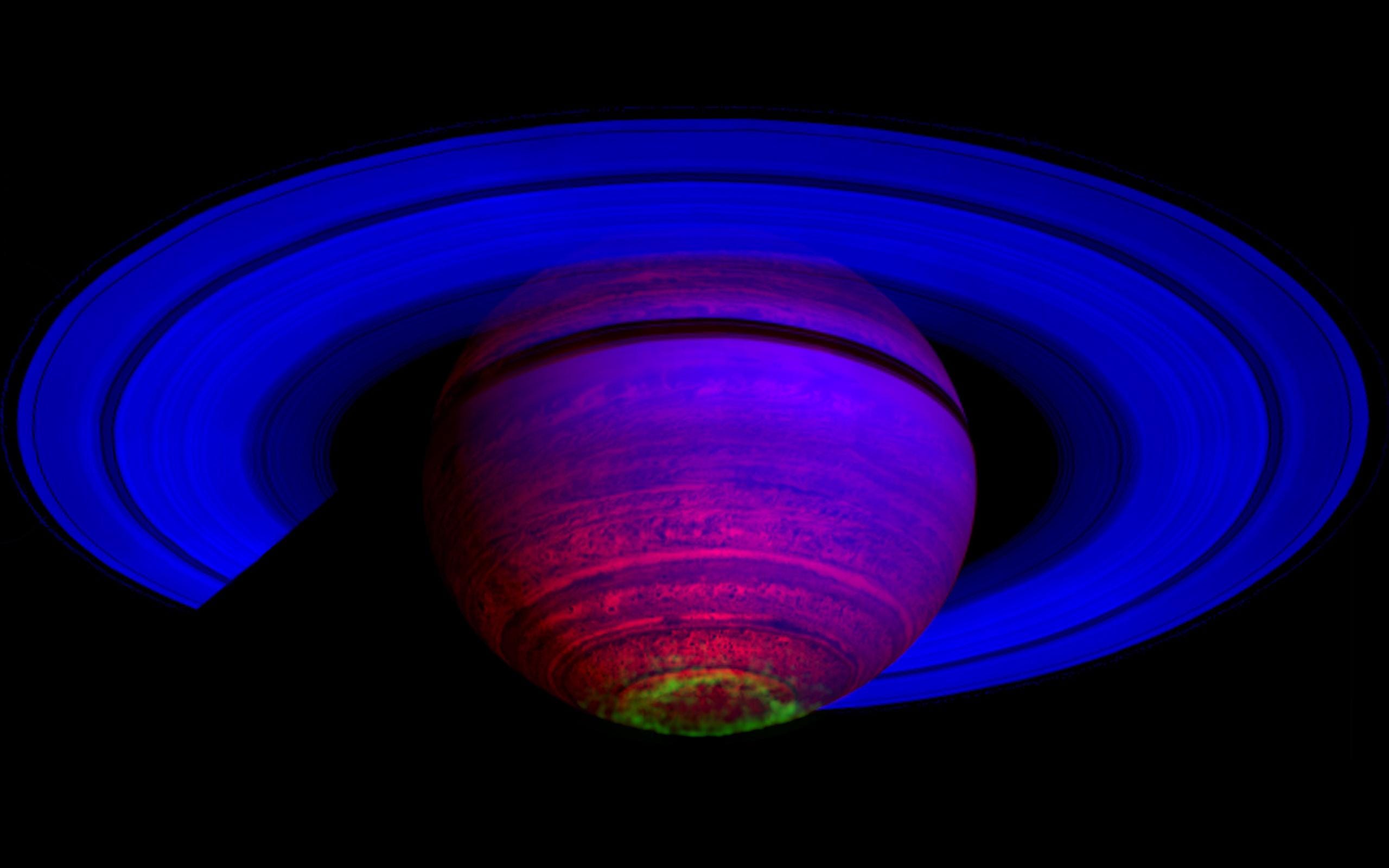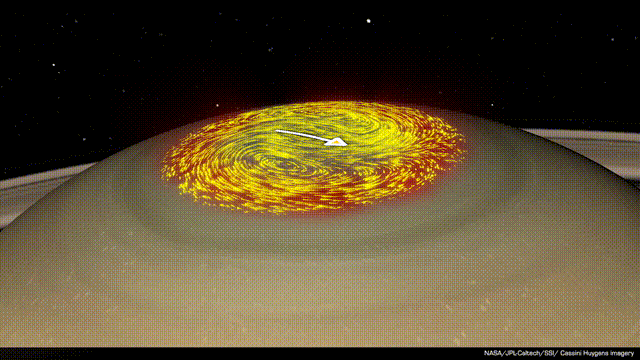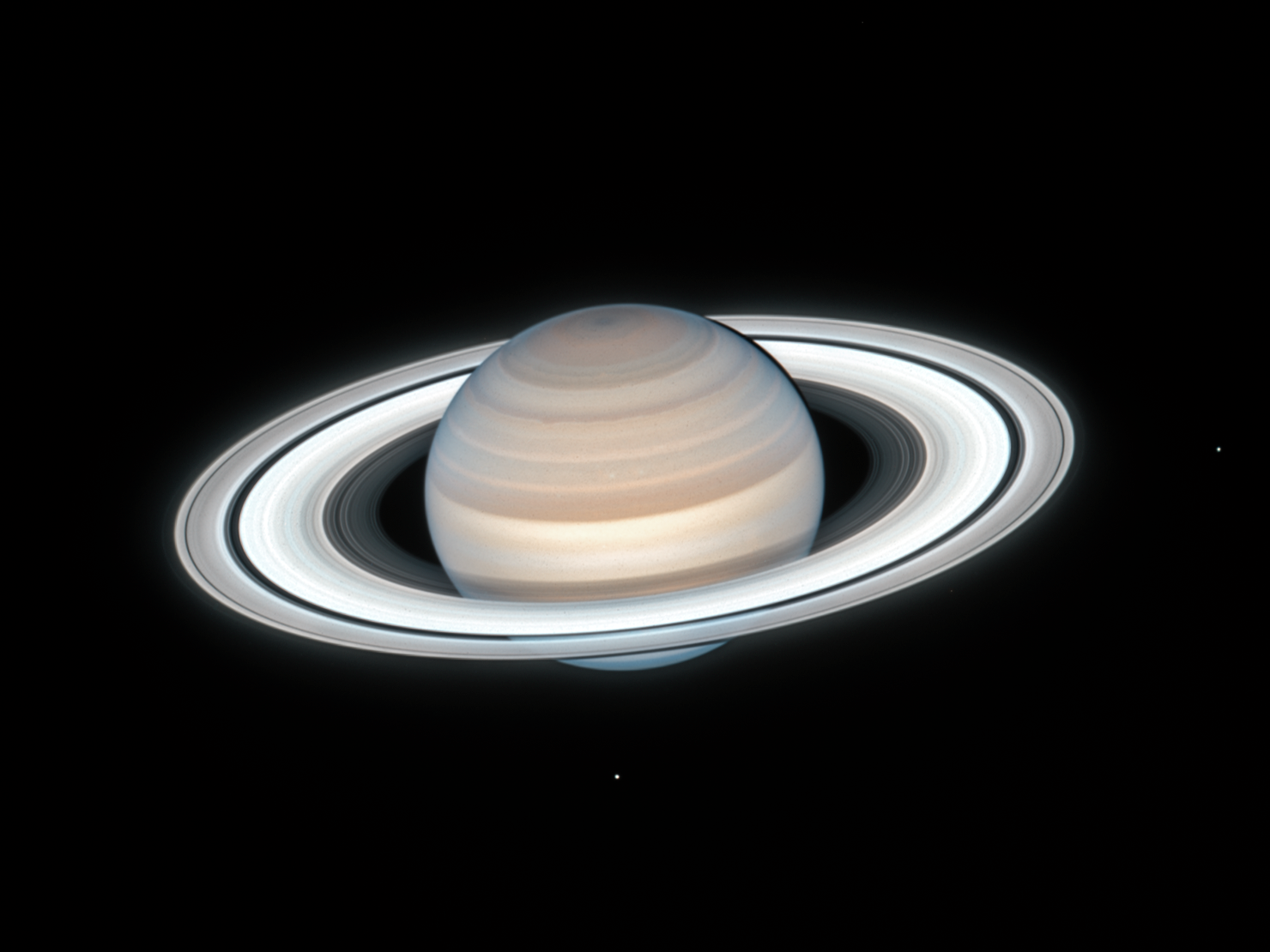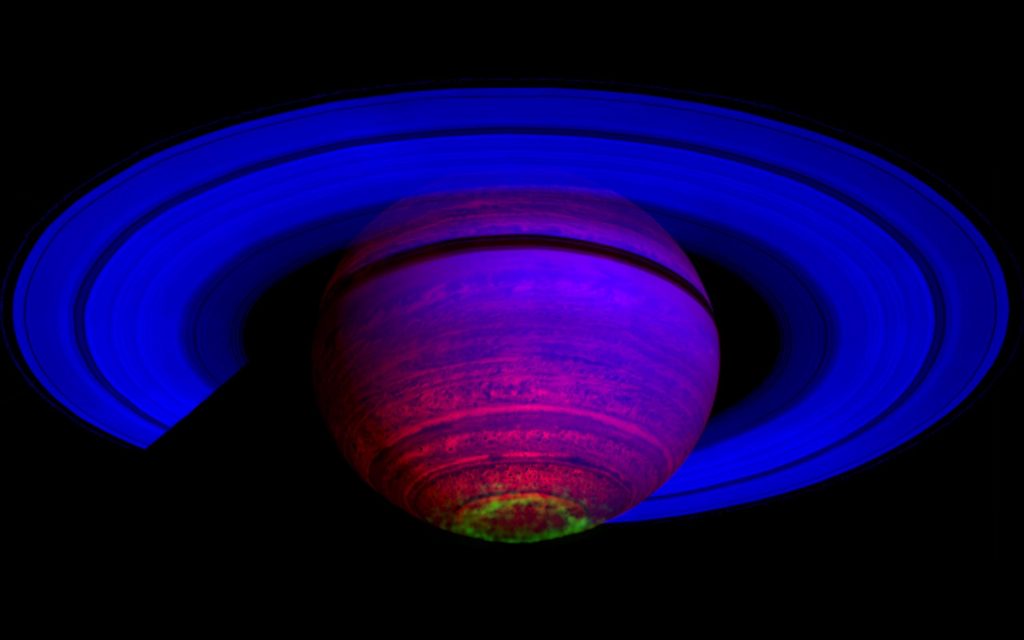
- Saturn's rate of rotation eluded astronomers for decades, because its magnetic field kept changing.
- A new study solved the mystery: Winds at the planet's north pole are dragging its magnetic field.
- Unlike other planets, electrically charged winds drive Saturn's aurora borealis.
Powerful winds at Saturn's north pole are fueling its aurora lights and throwing off scientists' measurements, astronomers have discovered.
The winds, which cycle through two enormous vortexes at the planet's north pole, carry electrically charged ions that drag the planet's magnetic field. The phenomenon, a mystery until now, prevented scientists from measuring the length of a day on Saturn for decades.
Since clouds move on their own, looking at a gas planet from afar won't tell you how fast it spins. Scientists instead measure the magnetic field, which is rooted deep in the planet's core. But when NASA's Cassini probe reached Saturn in 2004, scientists were surprised to find that the rate of radio pulses from the planet's magnetic field had changed since NASA's Voyager 2 mission flew past it in 1981.
"The magnetic field and radio emissions from it usually act like a lighthouse," meaning the radio bursts come in regular pulses, James O'Donoghue, a planetary scientist at the Japan Aerospace Exploration Agency and coauthor on the new study, told Insider.

"For Saturn, this rotation period has weirdly drifted over time, confusing the heck out of everyone," he added. "Even weirder, the rotation period of the planet has drifted independently in the north and the south."
It was unlikely that Saturn was spinning at different speeds during different seasons, or that its northern half was spinning at a different speed than its southern half. But something had to be dragging on the magnetic field between Saturn's surface and the NASA spacecraft.
During late-night discussions, scientists tossed around theories. Maybe Saturn's magnetic field slowed down as it passed through lava and gasses erupting from volcanoes on its moon Enceladus. Or maybe the thick methane atmosphere of the moon Titan — or Saturn's rings themselves — could be the culprits.
All those theories turned out to be wrong. Electrically charged wind was fueling Saturn's auroras and dragging its magnetic field all along, according to the new study, which was published in the February issue of the Geophysical Research Letters.
Saturn has the first wind-driven aurora borealis

Scientists eventually figured out how to measure Saturn's spin without the help of its magnetic field. They studied slight changes in the gravitational pull the planet exerts on its rings. In 2019, they determined that Saturn rotates every 10 hours, 33 minutes, and 38 seconds.
But the mystery of the changing magnetic field remained.
While scientists had previously theorized that a powerful double-vortex polar weather pattern could be the culprit behind Saturn's moving magnetic lines, the new study is the first evidence supporting the idea.
To test the theory, University of Leicester researchers studied Saturn's aurora from Hawaii's Keck Observatory throughout the summer of 2017, using infrared light. Most planets, including Earth, get their auroras from electrically charged particles in space — either from the sun or from nearby moon volcanoes. Those particles get captured by the planet's magnetic field and channeled toward the poles, where they interact with gases in the atmosphere to create colorful dancing lights.
In Saturn's case, winds in the upper atmosphere, laden with electrically charged ions, are creating some of that interaction. The researchers tracked the movements of a hydrogen ion in the planet's upper atmosphere and found it was moving in twin vortexes — exactly as the weather-pattern theory predicted.
"This new paper finally shows what the bug was," O'Donoghue said.

